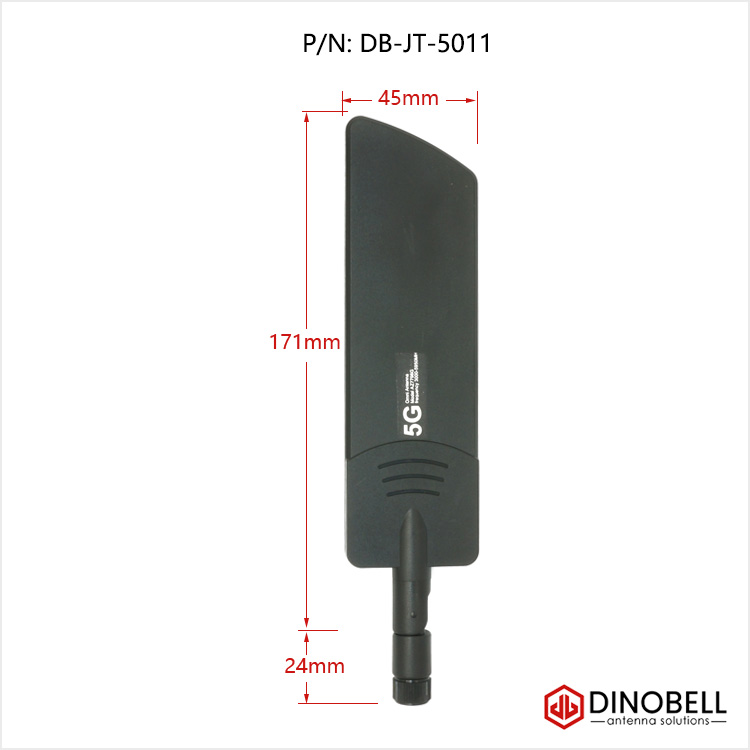Type: 5G Antenna SMA Terminal DB-JT-503
| Part Number: |
DB-JT-503 |
| Freq Range: |
700-960/1710-2700/3300-5000/5150-5950MHz |
| Center Freq: |
/ |
| Gain: |
3 dBi |
| VSWR: |
<2.0 |
| Impedance: |
50 Ohm |
| Polarization: |
Vertical |
| Radiation Pattern: |
Omni-Directional |
| Max. Input Power: |
25 W |
| Antenna Dimensions: |
H221mm*W27mm |
| Mounting Method: |
SMA Terminal Mount |
| Connector Type: |
SMA-male, RP-SMA-male optional |
Introduce of 5G Technology
5G technology has a theoretical peak speed of 20 Gbps, while the peak speed of 4G is only 1 Gbps. 5G also promises lower latency, which can improve the performance of business applications as well as other digital experiences (such as online gaming, videoconferencing, and self-driving cars).
While earlier generations of cellular technology (such as 4G LTE) focused on ensuring connectivity, 5G takes connectivity to the next level by delivering connected experiences from the cloud to clients. 5G networks are virtualized and software-driven, and they exploit cloud technologies.
The 5G network will also simplify mobility, with seamless open roaming capabilities between cellular and Wi-Fi access. Mobile users can stay connected as they move between outdoor wireless connections and wireless networks inside buildings without user intervention or the need for users to reauthenticate.
The new Wi-Fi 6 wireless standard (also known as 802.11ax) shares traits with 5G, including improved performance. Wi-Fi 6 radios can be placed where users need them to provide better geographical coverage and lower cost. Underlying these Wi-Fi 6 radios is a software-based network with advanced automation.
5G technology should improve connectivity in underserved rural areas and in cities where demand can outstrip today’s capacity with 4G technology. New 5G networks will also have a dense, distributed-access architecture and move data processing closer to the edge and the users to enable faster data processing.






